Keeping your food cold during outdoor adventures, long trips, or power outages doesn’t always require a cooler bag. Whether you’re going for a picnic, camping trip, road journey, or simply trying to preserve groceries, there are several practical and creative ways to keep food cold without a cooler bag.
In this comprehensive guide, we’ll explore proven techniques, DIY methods, and expert tips to maintain the freshness of your food for hours — or even days — without relying on a traditional cooler.
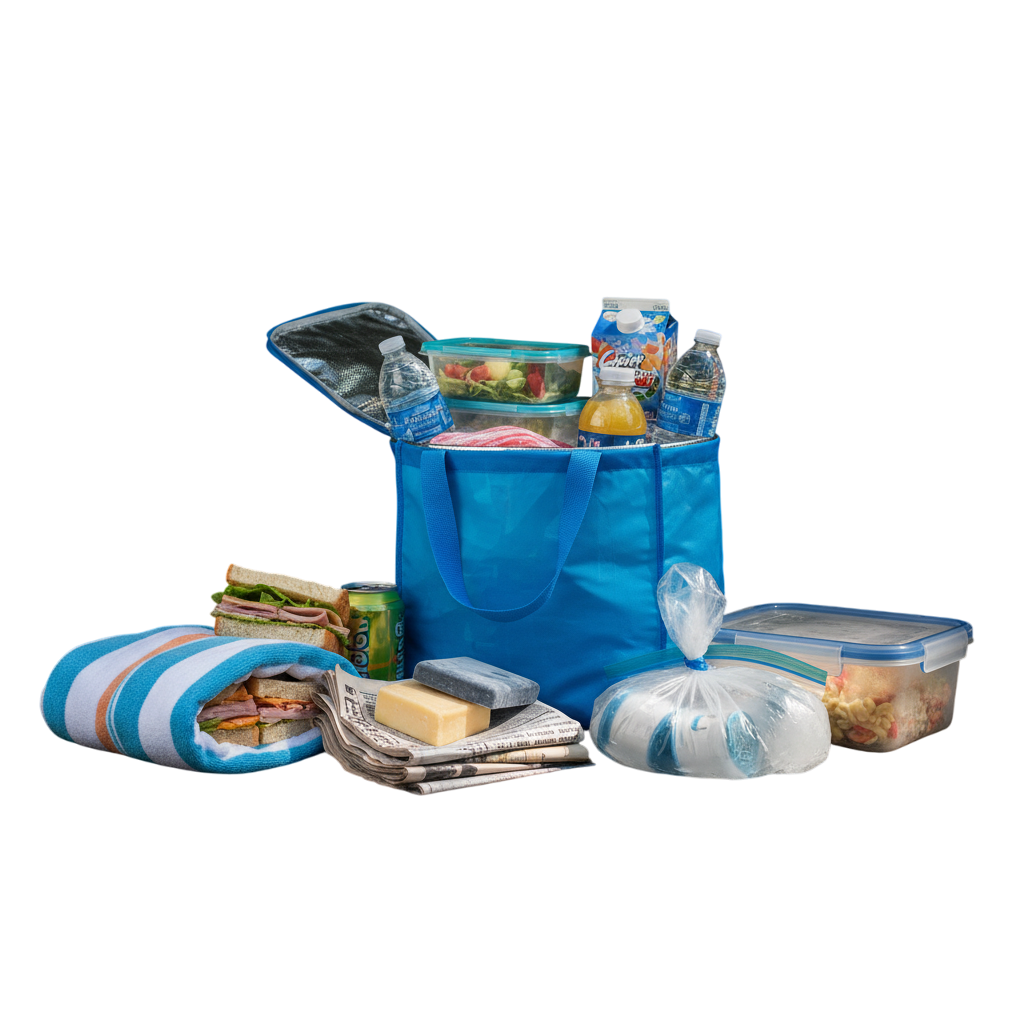
Use Frozen Water Bottles or Ice Packs
One of the simplest and most effective ways to keep food cold is by using frozen water bottles or ice packs.
How It Works:
- Freeze several plastic bottles filled with water overnight.
- Place them strategically around your food items.
- As they thaw, they’ll provide a steady cooling effect while giving you cold drinking water later.
Tip: Use Yeti Ice, Techni Ice, or homemade gel ice packs for longer-lasting results. They tend to stay cold much longer than regular ice cubes.
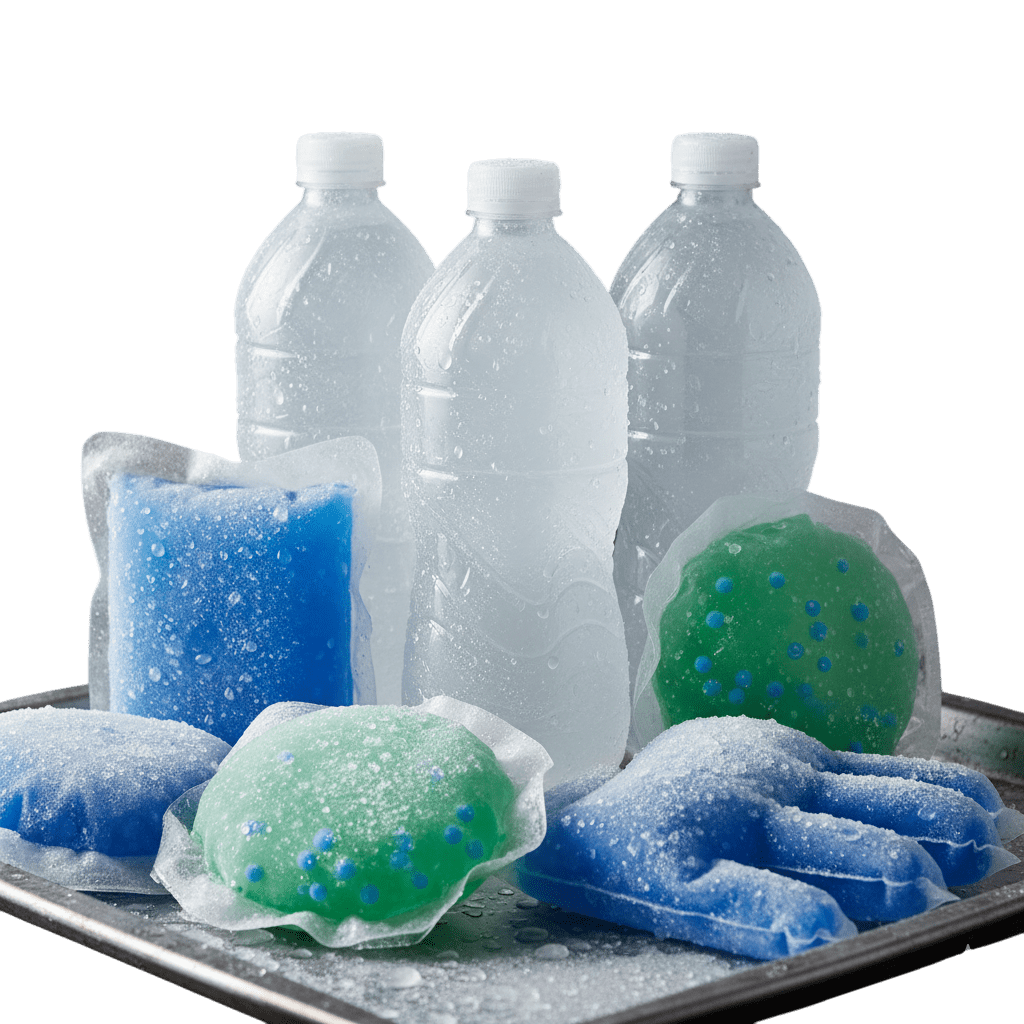
Wrap Food in Aluminum Foil and Towels
Insulation is the key to keeping cold air trapped around your food. Wrapping your food items properly can significantly extend their chill time.
Steps to Try:
- Wrap cold or frozen food tightly in aluminum foil.
- Cover it with a thick towel, blanket, or newspaper for added insulation.
- Place it in a sealed box, bag, or container to limit exposure to warm air.
This method works especially well for sandwiches, fruits, dairy snacks, and cooked meals you want to keep cold for several hours.
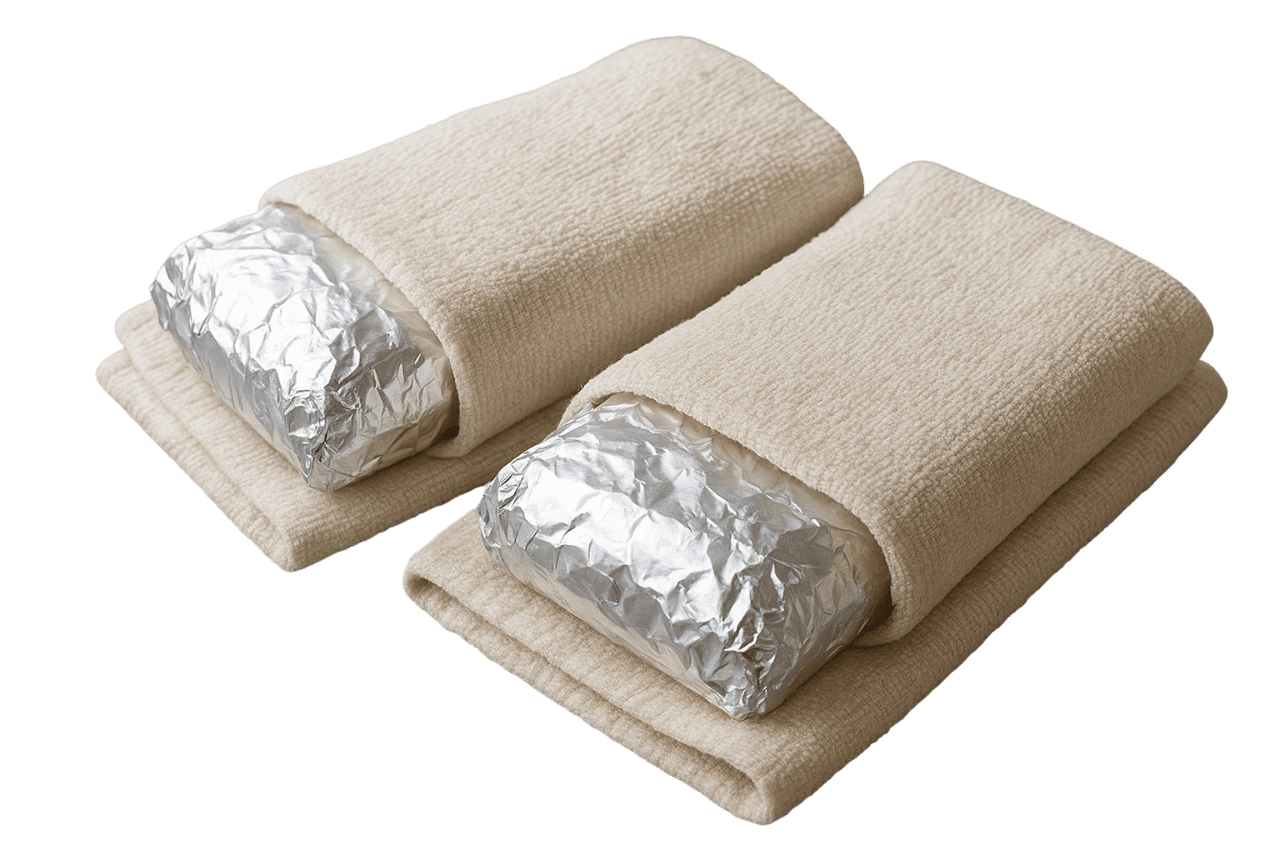
Use a Styrofoam or Cardboard Box
You can easily create a DIY cooler using everyday materials like Styrofoam boxes, cardboard boxes, or plastic containers.
To Make a DIY Cooler:
- Line the inside with aluminum foil for heat reflection.
- Add frozen gel packs or ice substitutes.
- Place your food inside and close the lid tightly.
- For better insulation, tape the seams or wrap the box with a thick blanket.
Styrofoam is a great insulator and is often used for shipping perishable goods, making it a cost-effective alternative to a cooler bag.
eo.
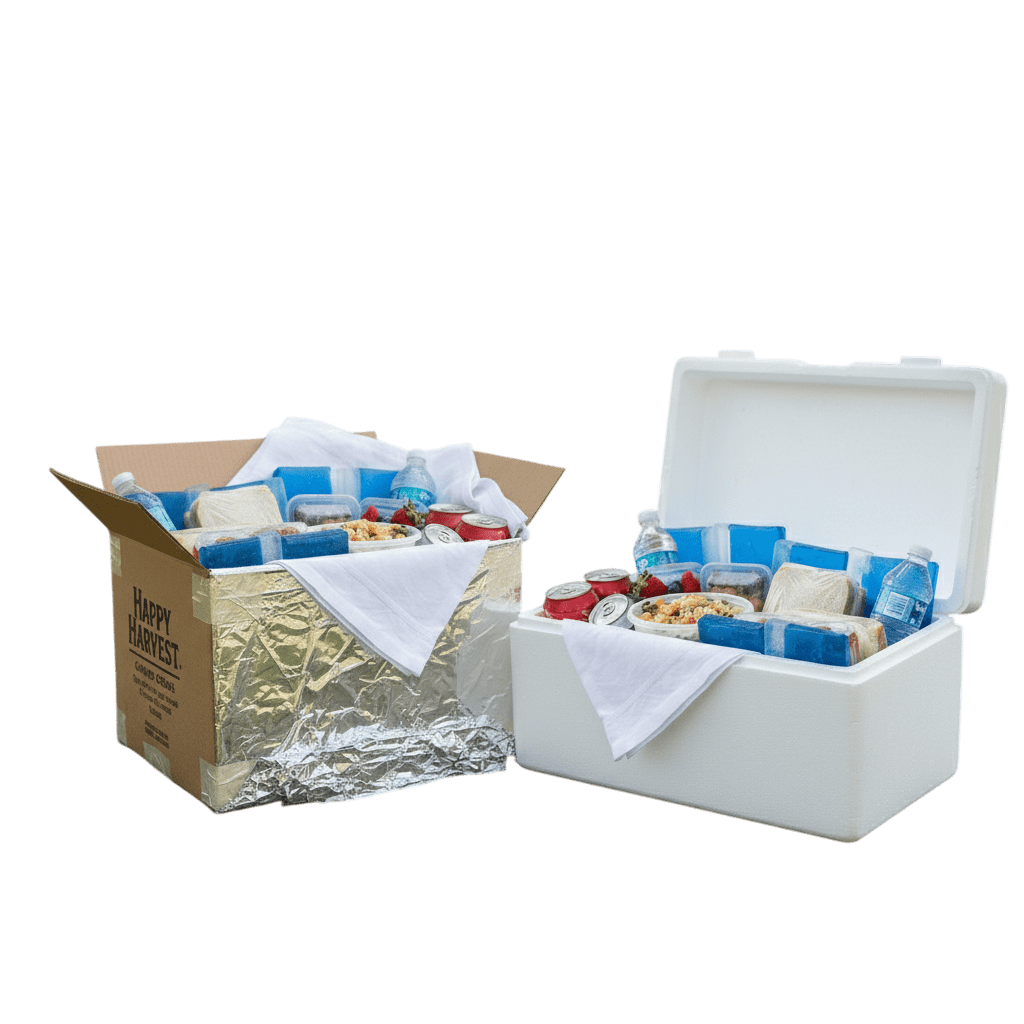
Freeze Your Food Before Packing
If your trip allows, freeze your meals and snacks before you leave. Frozen food takes much longer to thaw, helping to maintain a cold environment for surrounding items.
Foods You Can Freeze Easily:
- Pre-cooked meals (pasta, rice dishes, stews)
- Bottled drinks and juices
- Cheese blocks and butter
- Meats and seafood (in leak-proof bags)
Pro Tip: Keep frozen items at the bottom of your container — cold air sinks, helping to preserve everything above.
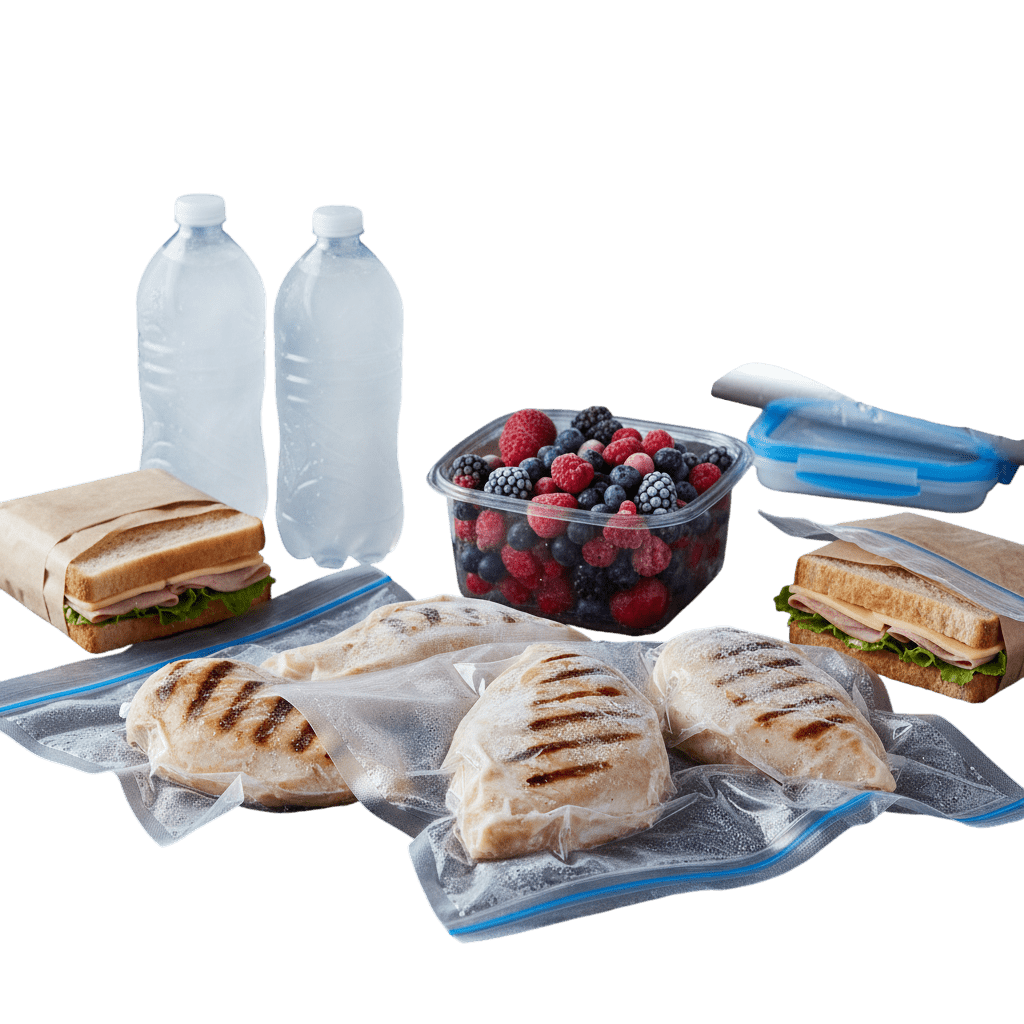
Keep Your Food in a Cool, Shaded Area
Direct sunlight quickly warms up food and melts ice. Always store your food in a shaded or cool area when outdoors.
Smart Shading Ideas:
- Place your food under a tree, umbrella, or tarp.
- Keep containers off the ground — use a table, rock, or elevated surface.
- Avoid black containers or bags, as they absorb heat faster.
For added protection, wrap your food container in a reflective emergency blanket — these are lightweight, compact, and excellent for reflecting heat.
Use Salt Ice Packs for Extra Cooling Power
A saltwater ice pack can stay colder for longer than plain ice. Adding salt to water before freezing lowers its freezing point, creating ice that remains below 32°F (0°C).
How to Make Salt Ice Packs:
- Mix 2 tablespoons of salt per liter of water.
- Pour into resealable bags or plastic bottles.
- Freeze overnight.
- Use them like regular ice packs around your food.
This trick is ideal for camping, fishing trips, or long drives, where extended cooling is needed.
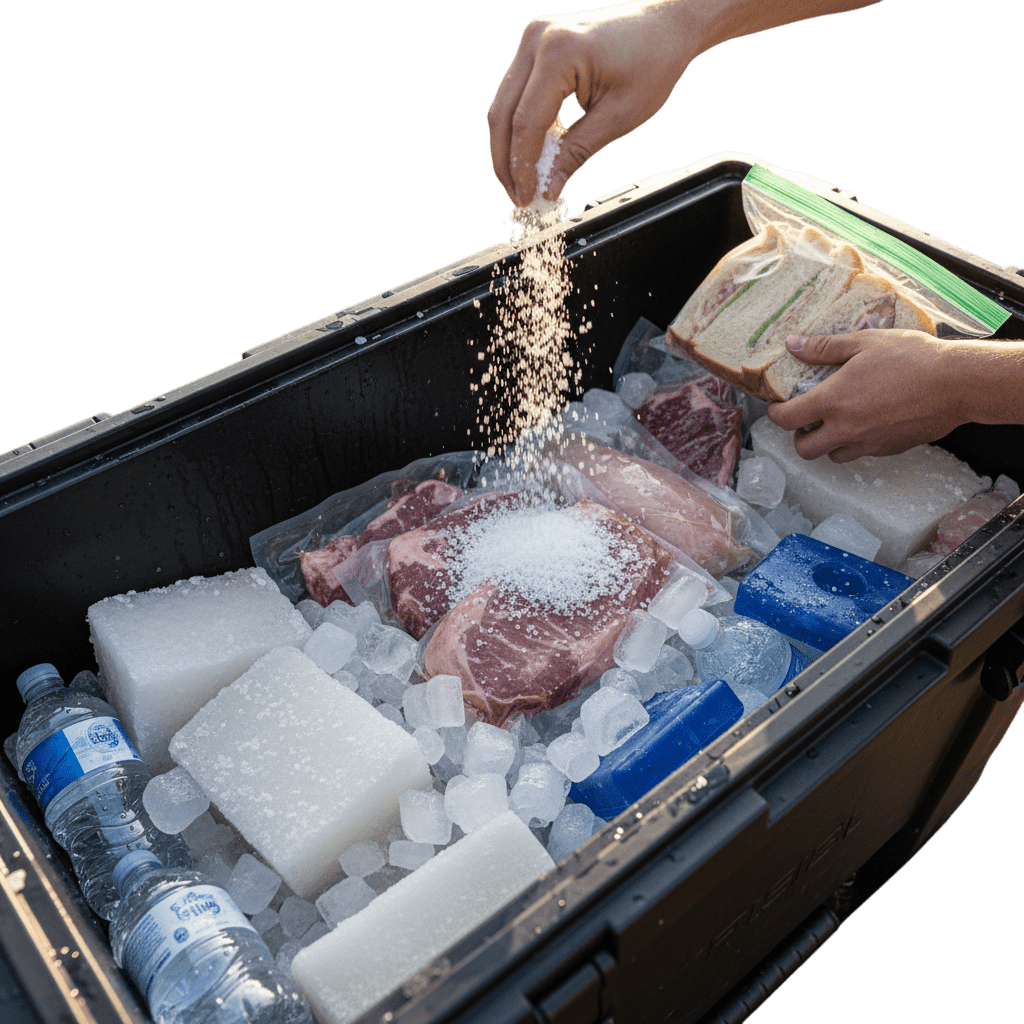
Store Food in a Cooler Substitute
Even without a traditional cooler, there are plenty of household items that can double as cooling containers:
Best Cooler Substitutes:
- Insulated grocery bags
- Thermos lunch boxes
- Plastic storage bins lined with foil
- Laundry baskets wrapped in blankets
- Metal containers covered with towels
Combine these with ice packs or frozen food to achieve a similar effect as a cooler bag — often for free.
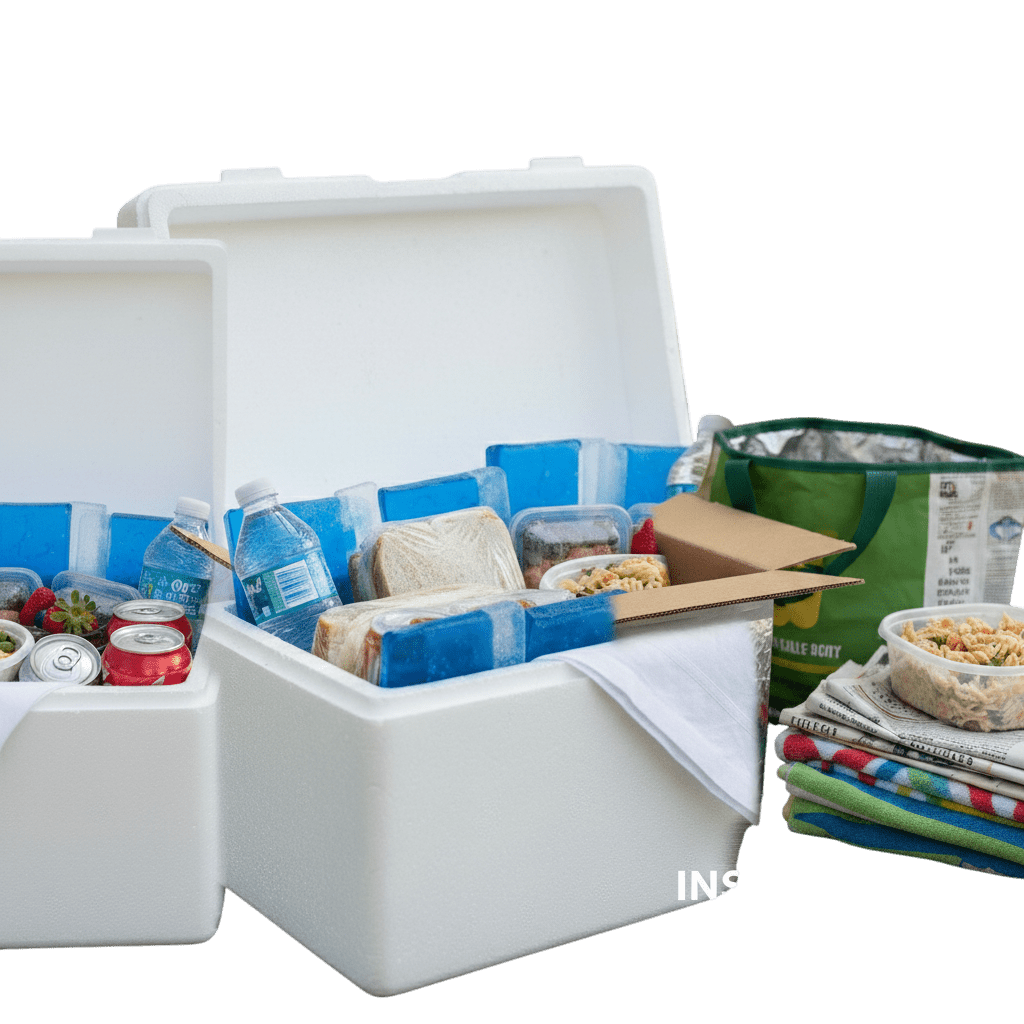
Keep Food in Airtight Containers
Air exposure accelerates the warming process and leads to condensation. Use airtight, leak-proof containers to maintain cold temperatures and avoid soggy food.
Recommended Containers:
- BPA-free plastic boxes
- Stainless steel lunch containers
- Mason jars for drinks or sauces
- Vacuum-sealed bags for meats or seafood
Airtight containers also prevent odors from spreading and protect your food from pests or insects during outdoor trips.
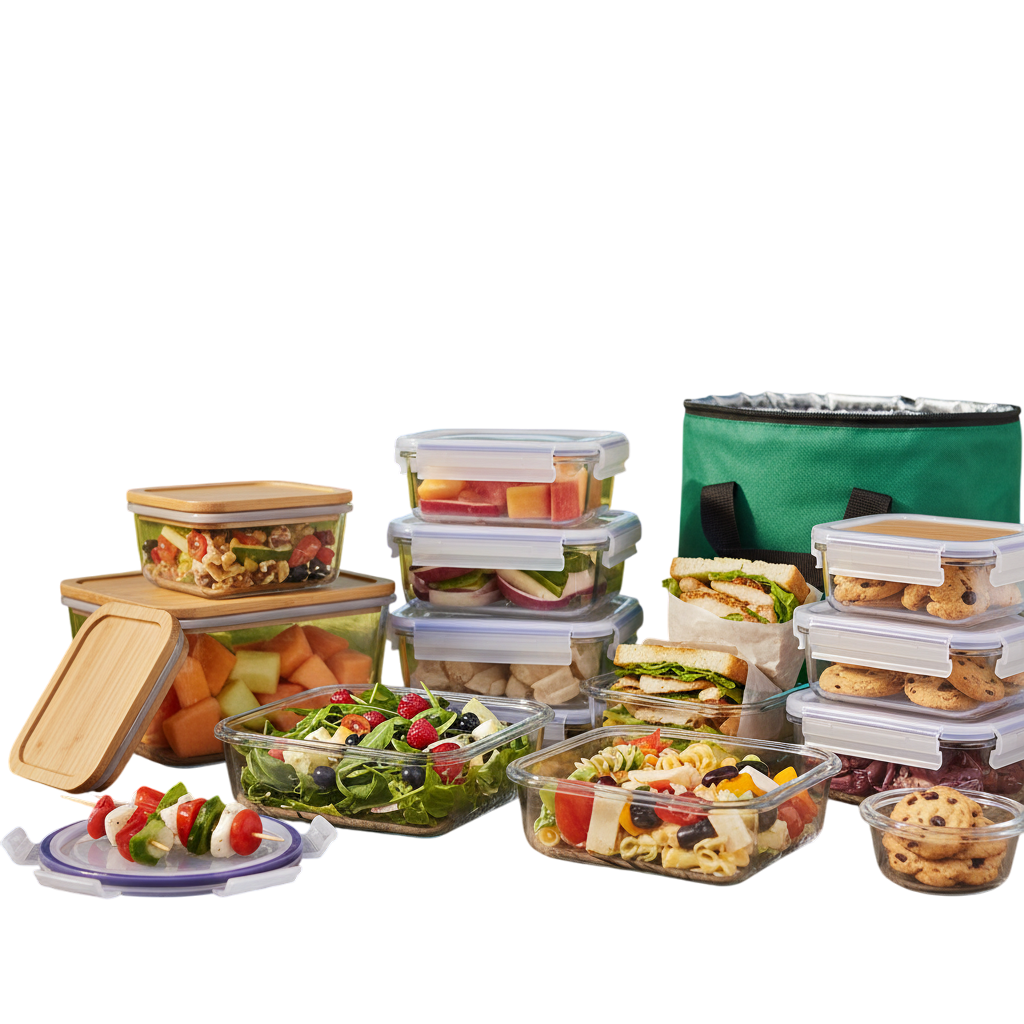
Keep Food in Airtight Containers
Air exposure accelerates the warming process and leads to condensation. Use airtight, leak-proof containers to maintain cold temperatures and avoid soggy food.
Recommended Containers:
- BPA-free plastic boxes
- Stainless steel lunch containers
- Mason jars for drinks or sauces
- Vacuum-sealed bags for meats or seafood
Airtight containers also prevent odors from spreading and protect your food from pests or insects during outdoor trips.
Lorem ipsum dolor sit amet, consectetur adipiscing elit. Ut elit tellus, luctus nec ullamcorper mattis, pulvinar dapibus leo.
Separate Cold and Room-Temperature Foods
When packing, avoid mixing warm and cold foods together. Warm items will quickly raise the temperature and reduce the effectiveness of your cooling method.
Best Packing Practice:
- Keep cold foods together in one insulated box.
- Store non-perishable items (bread, chips, snacks) in a separate bag.
- Add ice packs only to the cold food box.
This simple separation ensures longer cooling duration and prevents spoilage
Use Natural Cooling Sources
If you’re in nature, you can take advantage of natural cold environments:
- Place your food in a shaded stream (in waterproof bags).
- Store containers underground, where temperatures are cooler.
- Keep them next to cold rocks or under thick vegetation.
These age-old techniques work remarkably well when combined with other insulation strategies.
Monitor Temperature When Possible
If you’re storing food for extended periods, it’s smart to monitor its temperature using a small food thermometer. The safe zone is below 40°F (4°C).
If your food begins to warm beyond this, consume it promptly or discard perishable items to avoid food poisoning.
Keeping food cold without a cooler bag is entirely possible with a little planning, creativity, and resourcefulness. Whether using frozen bottles, foil wraps, Styrofoam boxes, or natural cooling, these techniques ensure your food stays fresh and safe — wherever your adventures take you.